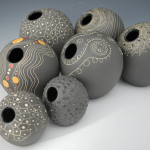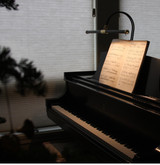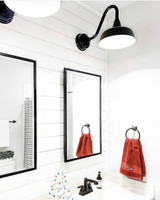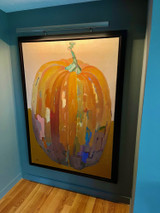INTERVIEW WITH SASHA BAKARIC: BRINGING CERAMICS TO LIFE
Sasha Bakaric is an artist who grew up in Croatia and finds her inspiration from every living thing around her. She is a ceramics artist who works her craft with a large amount of skill, precision, and vision. She found her love for ceramics later in life and transitioned into a full time studio ceramicist after already working a career outside of the arts. Her inspiration comes from the basis of all human existence – the cells that formulate our being and the viruses that attack those very cells. Her pieces are connected in an organic way, yet each piece is different, much like the organic basis of life. She has taken what connects the living and breathing inhabitants of this world and infused the same ideals into her work. In a sense, she has created her own living organisms made up of her own artistic cells.
First off, thank you so much for taking the time to do this interview with us. We really appreciate it. Can you tell us a little bit about yourself (your childhood, how you started sculpting, your inspiration)?
Thank you for giving me the opportunity to talk about my work. Making art and working with clay is now my passion, but it is actually my second life. I grew up in Croatia, got a degree in applied mathematics, and worked in finance and management. It was only when I signed my then 2-year-old for a clay class, that I touched clay for the very first time in my life. Within several years I became very passionate about clay. I could not imagine going back to my old, boring life. My first surface decorations were very spontaneous without any specific references but people started telling me that my doodles looked a lot like amebae and other microscopic images. I then started researching the microscopic world and questioning our relationship with the invisible world and the world inside of us.

When did you know you wanted to be a sculptor? What was it like changing careers?
I don’t think I ever told myself: “Okay, from now on I am a sculptor!” I just felt I did not want to go back to my previous life. I had no choice but to work with clay. Changing careers was scary! It still is. I went from being a CFO of a billion dollar company to an artist who basically would not be able to survive without my husband’s support. But even in my darkest days, I still never regret it. I feel that I found what fills my heart and my mind and I am very grateful that I am able to do it.
Can you describe your creative process when sculpting? What are you initially inspired by?
It is hard to define where direction for specific pieces begins. I am continuously exploring new forms. I see interesting forms in everything and anything in my everyday life. Skyscrapers are particularly interesting to me. When I start a new cycle, I focus on one or two forms and explore them in clay. I don’t model or draw much. A very similar process takes placewith surface designs. I am always looking for intriguing images of microscopic organisms or cells. They stay in my mind and I use them when I work on surfaces. I am also very much inspired by my own work. When I take a piece out of the kiln, I see many potential new directions that I try to follow the next time I start a similar piece.

What is your main statement behind your work?
I am a maker. I make objects that require skill and significant effort. I am also questioning our relationship with beauty. Could an image of cancer cells be beautiful? Would the same image be beautiful if people would not know what it is?
Do you have a personal piece of artwork that holds a strong value or meaning to you?
Yes, I started making orbs while thinking about cells or viruses that multiply and renew all the time and sometimes even go out of control. My father died of cancer and now my mother is fighting it so cells that are out of control are always on my mind. Making cancer cells into objects that one can hold and that are actually quite beautiful is my way of dealing with fear.
Do different colors have different meanings in your work?
I love various shades of reds and oranges. Early in my work, for some reason, I decided that dangerous viruses and bacteria are more “evil” if they are red or orange. Maybe this is just because they create a stronger contrast with dark grey backgrounds.

How did growing up in Croatia affect you as an artist?
I grew up in what was then communist Yugoslavia. There was lots of brainwashing happening during my childhood. The way people survived was to always question authority and be skeptical. I still do that in my everyday life and in my work. I question myself a lot and that forces me to explore new ideas and directions.
Where did your initial inspiration for cells and viruses come from? Did your work move in that direction, then you found your inspiration? Or did you shape your work to follow an initial inspiration?
My work led me to it. Now, looking back, it was probably something that was mostly on my mind so it just had to come out.

Whose work inspires and is an influence to you?
Eva Hild, Swedish sculptor; Gustavo Perez Mexican ceramicist; Toshiko Takaezu American ceramicist and painter; Alvar Aalto Finish architect and designer; Tapio Wirkkala Finish designer and sculptor; Harumi Nakashima Japanese ceramicist and many others. I do not know if any of these artists have a direct influence on me but I admire their work very much.

What would you say to an aspiring artist?
Work as much as possible. Establish a studio routine. Your work will lead you to where you need to be. Don’t rush to sell. Confidence to face the world will come from a strong body of work. Get some business sense and always be professional.
Recent Posts
-
Playing in the Spotlight: The Power of Piano Lights
There's something magical about playing the piano under the spotlight. The music resonates through t …15th Apr 2024 -
Choosing the Right Bathroom Lighting: Tips for Creating a Spa-Like Retreat
In the realm of home design, bathrooms often serve as sanctuaries—places where we start and end our …25th Mar 2024 -
Our Picture & Art Lights Bring Your Artwork To Life!
Art has the power to captivate, inspire, and evoke emotions. Whether you're an avid art collector or …14th Feb 2024




